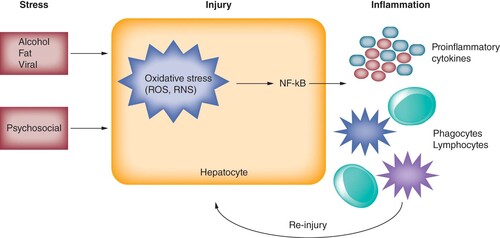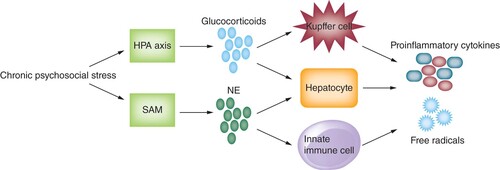Figures & data
Table 1. Types and tools to measure stress.
Alcohol, fat and viral infection are established hepatic stressors. Psychosocial stress may also lead to a similar pattern of hepatic injury. Pathophysiological stressors can trigger an oxidative stress reaction via overproduction of ROS and RNS. These oxidative species can precipitate NF-κB-mediated inflammatory pathways, leading to release of pro-inflammatory cytokines and recruitment of phagocytic cells (neutrophils and monocytes) and lymphocytes. This inflammatory milieu within the liver can lead to continued hepatocyte injury.
RNS: Reactive nitrogen species; ROS: Reactive oxygen species.

Chronic stress can promote release of NE via SAM system, activating innate immune cells possessing adrenergic receptors and leading to production of pro-inflammatory cytokines. Chronic stimulation of the HPA axis from psychosocial stress can decrease its sensitivity to negative feedback loops, leading amplification of pro-inflammatory cytokines by Kupffer cells. Both chronic glucocorticoid production and NE release can also stimulate hepatocytes to produce hydroxyl free radicals.
HPA: Hypothalamic–pituitary–adrenal; NE: Norepinephrine; SAM: Sympathetic adrenomedullary system.

